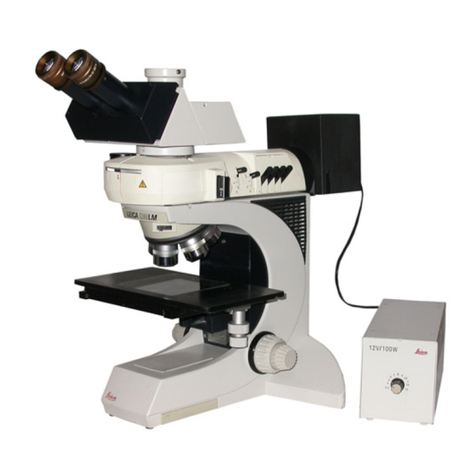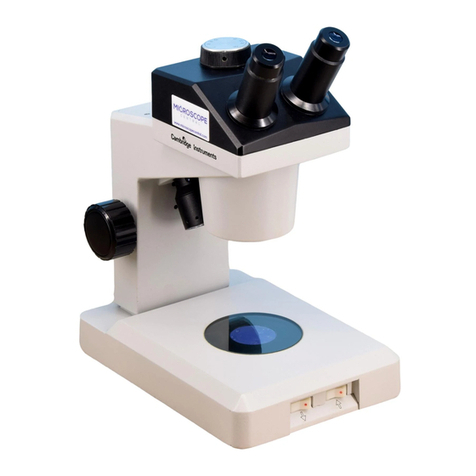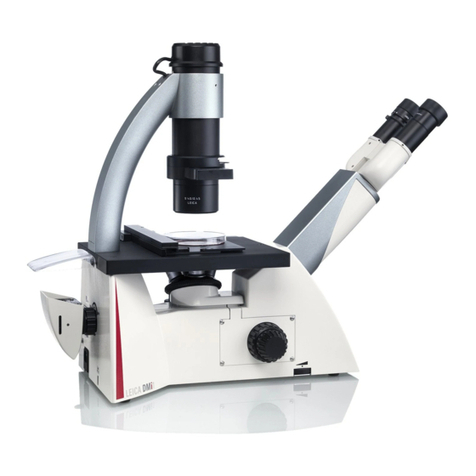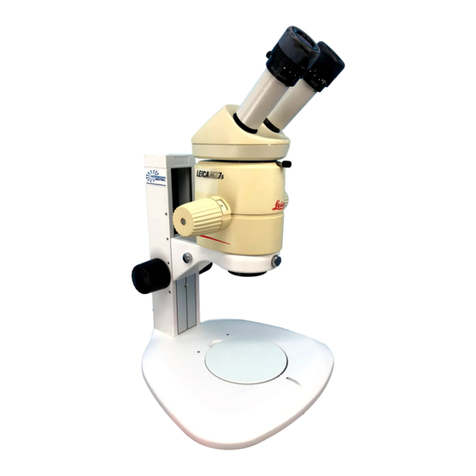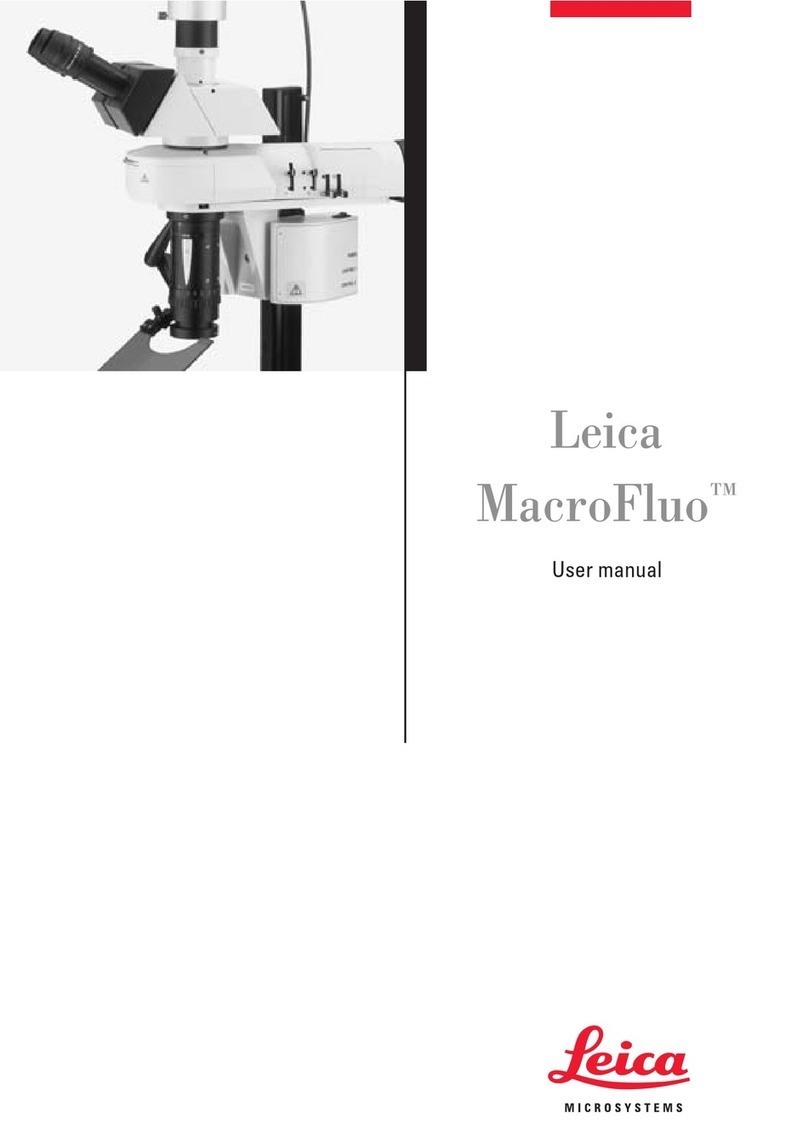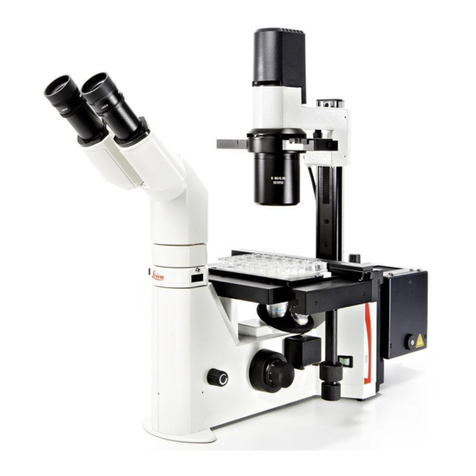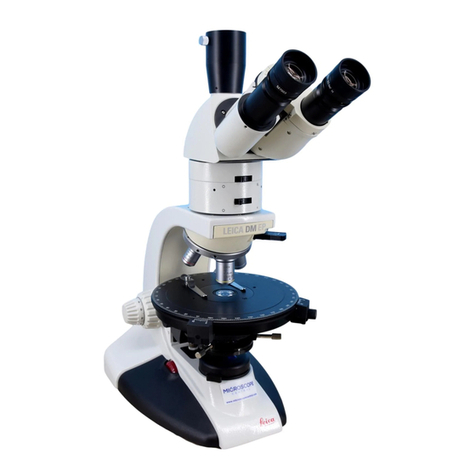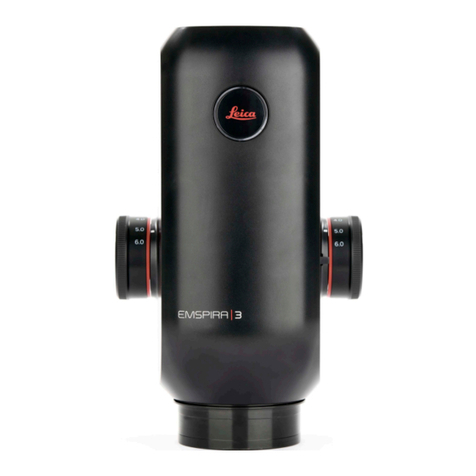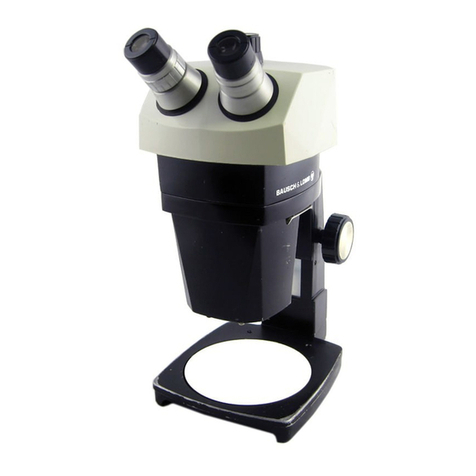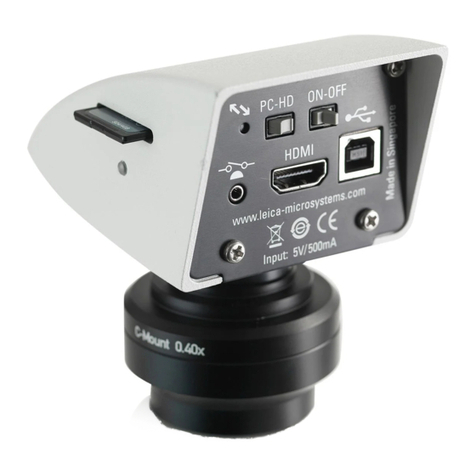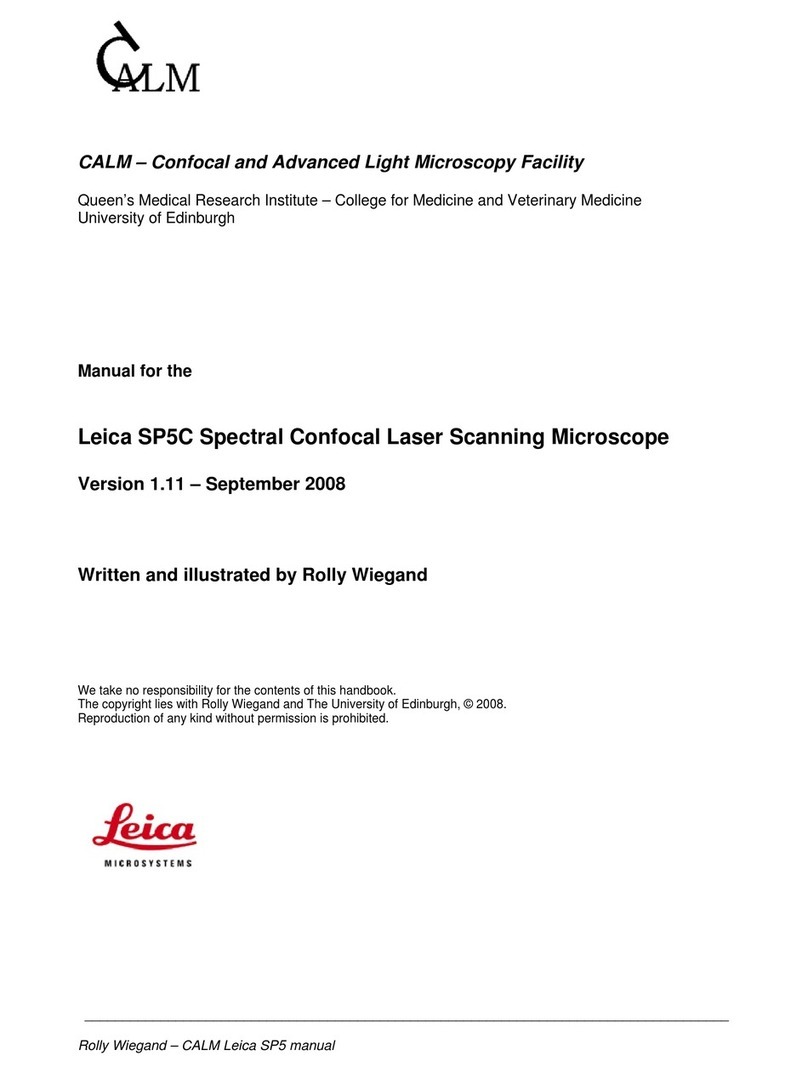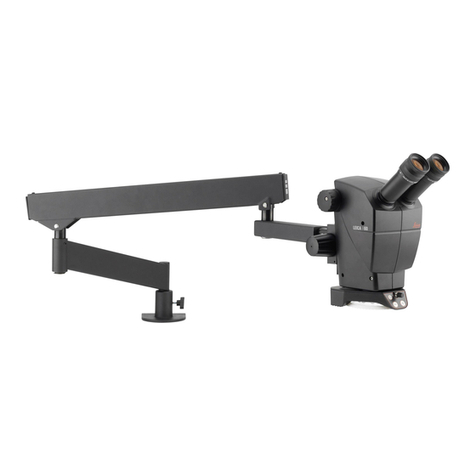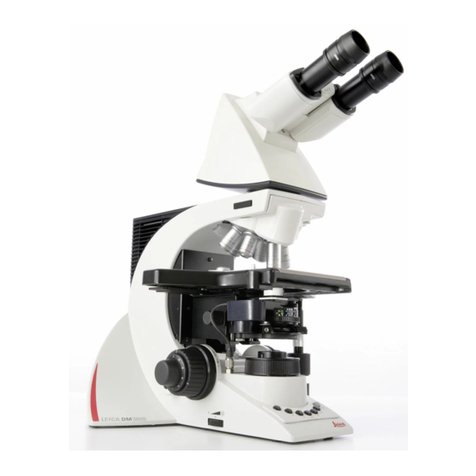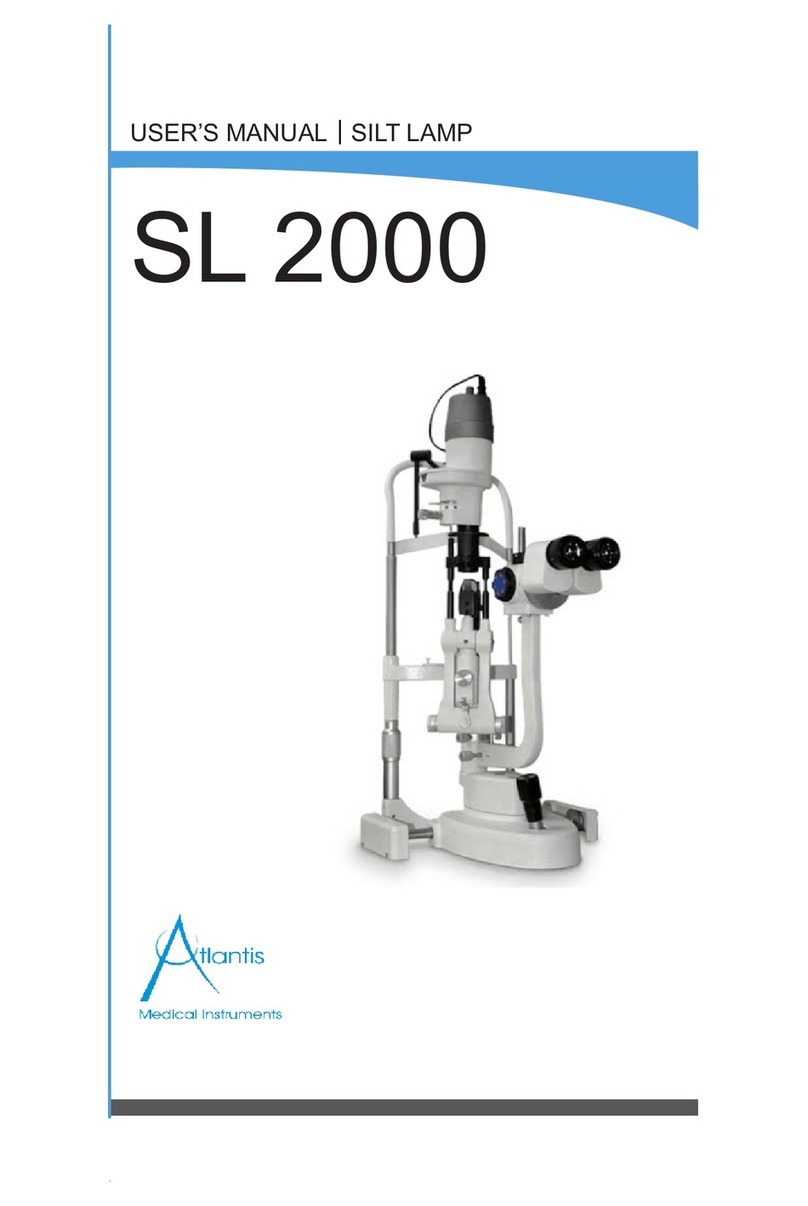Leica M Series User Manual 6
Safety Instructions (Continued)
Repairs, service work
ORefer to "Safety Concept" booklet
OOnly original Leica Microsystems spare
parts may be used.
OBefore opening the instruments, switch off
the power and unplug the power cable.
Touching the live circuit can cause
injury.
Transport
OUse the original packaging for shipping or
transporting the individual modules of the
Leica M stereo microscopy series and the
accessory components.
OIn order to prevent damage from vibrations,
disassemble all moving parts that (accord-
ing to the user manual) can be assembled
and disassembled by the customer and
pack them separately.
Integration in third-party products
ORefer to "Safety Concept" booklet
Disposal
ORefer to "Safety Concept" booklet
Legal requirements
ORefer to "Safety Concept" booklet
EC Declaration of Conformity
ORefer to "Safety Concept" booklet
Health risks
Workplaces with stereo microscopes
facilitate and improve the viewing task,
but they also impose high demands on the eyes
and holding muscles of the user. Depending on
the duration of uninterrupted work, asthenopia
and musculoskeletal problems may occur. For
this reason, appropriate measures for reduction
of the workload must be taken:
OOptimal arrangement of workplace, work
assignments and work flow (changing tasks
frequently).
OThorough training of the personnel, giving
consideration to ergonomic and organiza-
tional aspects.
OThe ergonomic design and construction of
the Leica M stereo microscopy series are
intended to reduce the exertion of the user
to a minimum.

